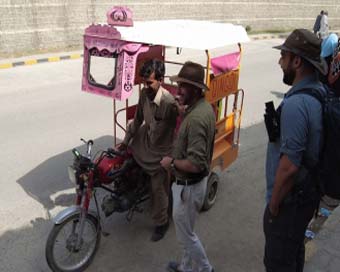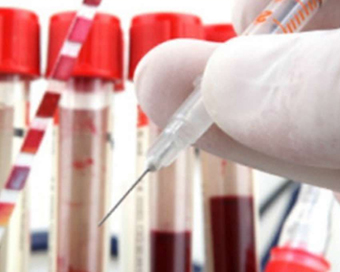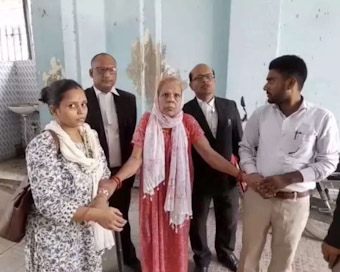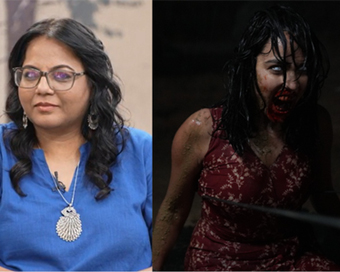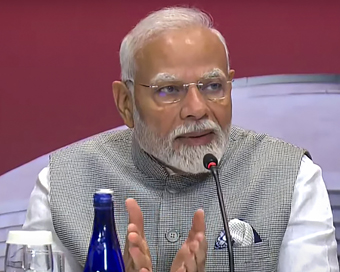 PM Modi visit USA
PM Modi visit USA Only the mirror in my washroom and phone gallery see the crazy me : Sara Khan
Only the mirror in my washroom and phone gallery see the crazy me : Sara Khan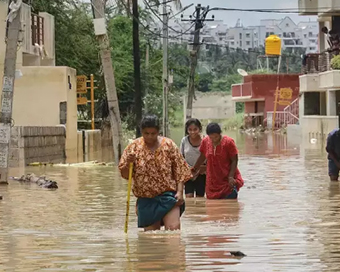 Karnataka rain fury: Photos of flooded streets, uprooted trees
Karnataka rain fury: Photos of flooded streets, uprooted trees Cannes 2022: Deepika Padukone stuns at the French Riviera in Sabyasachi outfit
Cannes 2022: Deepika Padukone stuns at the French Riviera in Sabyasachi outfit Ranbir Kapoor And Alia Bhatt's Wedding Pics - Sealed With A Kiss
Ranbir Kapoor And Alia Bhatt's Wedding Pics - Sealed With A Kiss Oscars 2022: Every Academy Award Winner
Oscars 2022: Every Academy Award Winner Shane Warne (1969-2022): Australian cricket legend's life in pictures
Shane Warne (1969-2022): Australian cricket legend's life in pictures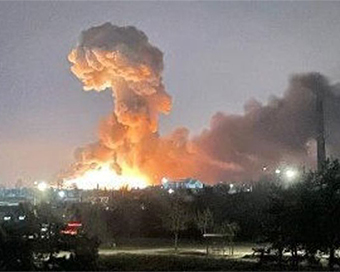 Photos: What Russia's invasion of Ukraine looks like on the ground
Photos: What Russia's invasion of Ukraine looks like on the ground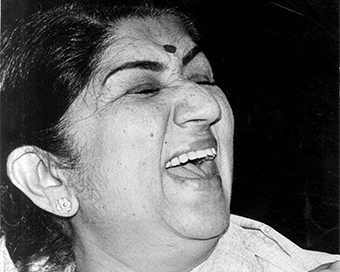 Lata Mangeshkar (1929-2022): A pictorial tribute to the 'Nightingale of India'
Lata Mangeshkar (1929-2022): A pictorial tribute to the 'Nightingale of India' PM Modi unveils 216-feet tall Statue of Equality in Hyderabad (PHOTOS)
PM Modi unveils 216-feet tall Statue of Equality in Hyderabad (PHOTOS)Hockey India has announced a 54-member core probable squad for the upcoming senior men’s
- Satwik-Chirag return as BAI names 14-strong squad for BWF Sudirman Cup Finals 2025
- Men’s Sr Hockey Nationals to be played in division-based format from April 4
- Mensik denies Djokovic 100th title in Miami final
- KIPG: Son of a vegetable vendor, Bihar’s Jhandu Kumar eyes Worlds, 2028 Paralympics
- Hardik Singh credits hard work and team unity for receiving HI Midfielder of the Year award
BIMARU states: Little progress in 2 years, learning crisis for millions of children Last Updated : 20 Jan 2017 02:32:36 PM IST 
(file photo)
In 2016, some learning outcomes for 111 million school-age students between ages six and 15 remained mostly unchanged in BIMARU states (Bihar, Madhya Pradesh, Rajasthan and Uttar Pradesh), when compared to 2014, after declining for four years, according to the 2016 Annual Status of Education Report (ASER) released in January 2017.
If the math and reading skills of these 111 million children -- nearly half of India's 252 million school-age children -- cannot be improved, it is unlikely that India will be able to completely reap the demographic dividend from its working-age population of 869 million by 2020 -- the largest of any country.
Here are the highlights of the new report:
1) In Uttar Pradesh, only 7.2 per cent of Grade III students in government schools could read a Grade II text; 7.9 per cent could subtract two-digit sums (national average: 25.2 per cent for reading, 27.7 per cent for math)
2) In Bihar, 75.2 per cent of Grade VIII children could read a Grade II textbook in 2016 compared to 87.2 per cent in 2010; 20.8 per cent of Grade III students could read a Grade II text; 27.3 per cent could subtract two-digit sums.
3) 23.7 per cent of children in Grade III in Rajasthan could read a Grade II text -- the highest recorded in the last five years.
4) Madhya Pradesh's learning levels are the lowest in BIMARU states -- 16.6 per cent of Grade III children, 64.3 per cent of Grade VIII children could read a Grade II text
Though learning levels in Madhya Pradesh are the lowest in BIMARU states, more children (16.6 per cent) in Grade III could read a Grade II level text in 2016, compared to 2014 (14 per cent), and 2010 (13.3 per cent).
Similar improvements can be seen in Rajasthan and Uttar Pradesh: 23.7 per cent of Grade III children in Rajasthan could read a Grade II text in 2016, compared to 15.6 per cent in 2010; in Uttar Pradesh, the percentage of children increased to 22.6 per cent from 15.4 per cent.
Primary school math levels have also improved in Madhya Pradesh. In 2016, 13.6 per cent of Grade III students could subtract compared to 10.6 per cent in 2014, with more improvement in government schools than private schools.
Fewer Grade VIII children in Madhya Pradesh could read a Grade II textbook in 2016 (64.3 per cent), than in 2014 (65.8 per cent) -- a drop from 2010, when 90.1 per cent could read a Grade II level text.
In Bihar, 20.8 per cent of Grade III students could read a Grade II text in 2016, compared to 21.9 per cent in 2014, mainly due to decline in learning levels of private school students.
The percentage of Grade VIII children in Uttar Pradesh, in private and public schools, who could read 8-10 lines from a Grade II English textbook fell from 77.7 per cent in 2010 to 67.8 per cent in 2016.
It is difficult to pinpoint reasons for the improvement or decline in learning outcomes, and reasons differ across states, Wilima Wadhwa, Director of the ASER centre, told IndiaSpend. Still, indicators such as the pupil-teacher ratio have been linked with better learning outcomes.
While the prescribed pupil-teacher ratio (PTR), according to the Right to Education Act (RTE), is 30:1 for primary schools, and 35:1 for upper primary, only 11.7 per cent of Bihar's schools follow these guidelines -- the lowest across India -- a decline from 12.7 per cent in 2014.
Though the PTR has improved in Uttar Pradesh, with 30.9 per cent of schools following RTE guidelines, compared to 16.1 per cent schools in 2010, it is still one of the states with the lowest proportion of such schools in the country.
Lack of useable toilets have also been linked to falling learning outcomes, as children have to leave the school to use a toilet, and often do not return to class, according to the Centre for Policy Research.
Not many BIMARU schools have unlocked, usable toilets, ASER data show. Overall, Uttar Pradesh has the lowest number of schools equipped with useable toilets (54.8 per cent) in India.
Madhya Pradesh -- the state which is reported to have constructed the second-most number of toilets, after Gujarat, in 2015 -- has 54 per cent of schools with a separate, functioning toilet for girls, the lowest among the BIMARU states.
_
_SHOW_MID_AD__
Prachi Salve and Alison Saldanha,IANS For Latest Updates Please-
Join us on
Follow us on








172.31.16.186


